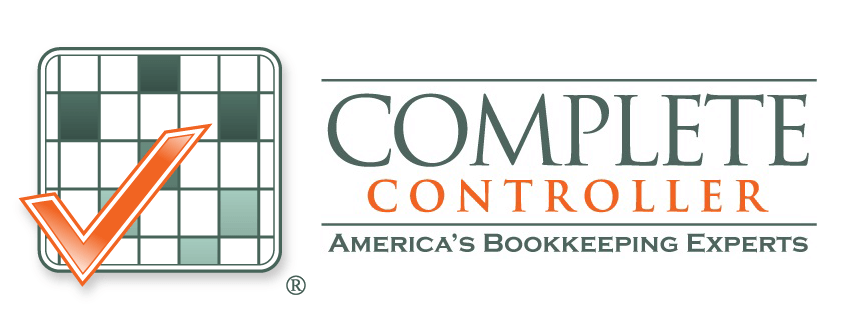By: Jennifer Brazer
Jennifer is the author of From Cubicle to Cloud and Founder/CEO of Complete Controller, a pioneering financial services firm that helps entrepreneurs break free of traditional constraints and scale their businesses to new heights.
Fact Checked By: Brittany McMillen
6 Ways to Boost Your Personal Finances
Managing your finances isn’t just about paying bills; it’s about creating freedom and opportunities. As someone who has spent over 15 years helping individuals and businesses regain control of their financial lives, I can confidently say this is one of the most rewarding investments you’ll ever make—not just for your wallet but also for your peace of mind.
Did you know that 64% of Americans live paycheck to paycheck, according to the American Psychological Association? This financial cliff-edge leaves little room for emergencies, much less big dreams like securing retirement or taking that bucket-list vacation. But here’s the truth: small, steady changes in how you approach your finances can yield life-changing benefits.
Let’s jump into six proven strategies to help you take charge of your personal finances today.

Financial Stress: The Root of All Evil
Financial stress is a silent saboteur affecting nearly every area of your life. The APA’s 2020 survey revealed that financial stress impacts 64% of Americans and is linked to anxiety, depression, and other mental health challenges. And it’s no wonder—when money feels tight, the weight can be overwhelming.
I’ve seen this firsthand with clients over the years. I worked with Sarah, a young professional in her twenties who fell into $5,000 of debt from a single car repair. She had no emergency savings and was surviving paycheck to paycheck. After creating a budget and reprioritizing her spending, she not only erased her debt but started investing—and today, financial stress no longer dominates her life.
The takeaway? Gaining control of your finances doesn’t just fill your bank account; it clears space in your mental and emotional reserves for a happier, healthier you.
Create a Budget and Track Expenses
The foundation of financial freedom
You can’t take control of your finances if you don’t know where your money is going. A budget creates clarity.
Start with these three steps:
- Write down all your income streams.
- List every expense, from rent to your favorite $7 latte habit.
- Subtract your expenses from your income to see what’s left—or what’s overspent.
Use personal budgeting tools like Mint, or You Need a Budget (YNAB) to simplify this process. My personal favorite is the 50/30/20 rule:
- 50% for needs (housing, groceries).
- 30% for wants (entertainment, dining out).
- 20% for savings and debt repayment.
Take Annie, a single mom I once consulted with. She used this strategy to cut unnecessary subscriptions and cooked at home more often. These small changes allowed her to save $8,000 in a year—money she used to strengthen her emergency fund. For more tips, explore our effective budgeting tools.
Implement Smart Savings Strategies
Build your emergency fund
Emergencies are inevitable, whether it’s a medical bill or car troubles. Without a cushion, these events can spiral into crippling debt. Experts recommend saving 3–6 months of living expenses, but even siphoning $50 per paycheck to a separate savings account can get you started.
Automate this process with high-yield savings accounts from providers like Marcus by Goldman Sachs or Ally Bank, where your money can earn more interest. Want to know how? Check out Bankrate’s emergency fund guidelines.
Maximize your savings potential
Unlike standard savings accounts, high-yield accounts grow your money faster without significant fees. It’s essentially free money working for you. The average American only saves 3.5% of their income, far below the 10–15% recommended. By automating contributions and exploring better savings vehicles, you’ll move closer to financial security.

Reduce Debt
Debt: The silent killer
The average American’s debt-to-income ratio is 1.43, meaning they owe $1.43 for every dollar they earn. High-interest debt, like credit cards, can snowball if not addressed quickly, while a mortgage or student loan debt may require longer-term management.
Proven debt reduction strategies
Two of the most effective methods for tackling debt include:
- Snowball Method: Pay off smaller balances first to build confidence.
- Avalanche Method: Target high-interest debt to minimize the overall cost.
A former client, Mark, owed $25,000 in total debt: $15,000 in student loans and $10,000 in credit card debt with an 18% interest rate. By focusing on the high-interest card first using the Avalanche Method, he shaved 18 months off his repayment plan and saved thousands in interest payments. For further strategies, see our guide on debt management strategies.
Start Investing
The power of compound interest
When it comes to investing, time is your greatest ally. An early investment of $100 monthly earning 7% interest could grow to over $120,000 by age 60, but waiting until you’re 40 cuts that figure by more than half.
Index funds and ETFs are beginner-friendly and offer significant long-term growth potential. Just remember—diversification spreads out risk. Explore more common investment mistakes to avoid to make informed decisions.
Plan for Retirement
Early preparation pays off
The statistics are staggering: Nearly 44% of Americans have no retirement savings. I’ve seen people push retirement off into their mid-60s or even 70s as a result. Don’t let this be you.
Take advantage of employer-matching 401(k) contributions—it’s essentially free money. An IRA is another powerful tool for tax-advantaged growth. Need more insights? Dive into our article on maximizing retirement savings.
Enhance Financial Literacy
Knowledge is the key
Financial literacy is your superpower. Start with free resources like Khan Academy’s financial education resources or books like The Total Money Makeover. The 2019 National Endowment for Financial Education revealed that only 34% of Americans are fluent in basic financial concepts, making this an urgent need.
Understanding credit scores, taxes, and long-term investments can be game-changers in your money journey.
Conclusion
Change doesn’t happen overnight, but each step counts. Whether it’s building a budget, paying down debt, or starting to invest, every effort brings you closer to financial freedom.
Are you ready to take control of your financial future? At Complete Controller, we’re here to help with the tools, advice, and personalized guidance you need. Visit us at Complete Controller to learn more.

FAQ
What is the first step in managing my personal finances?
Begin with a budget to track your income and expenses.
How can I reduce my debt effectively?
Consider the Snowball or Avalanche Method to tackle your balances strategically.
Why is investing early important?
Compound interest allows your money to grow significantly over time.
How much should I save for emergencies?
Aim for 3–6 months of expenses to cover unforeseen events.
How can I improve my financial literacy?
Explore free courses, read books, or consult with experts for practical knowledge.
Sources
- Academic Research Sources
- American Psychological Association, Federal Reserve, Employee Benefit Research Institute
- Books
- Dave Ramsey’s The Total Money Makeover, Grant Sabatier’s Financial Freedom
- Financial Resources
- Complete Controller, Mint, Marcus by Goldman Sachs
 About Complete Controller® – America’s Bookkeeping Experts Complete Controller is the Nation’s Leader in virtual bookkeeping, providing service to businesses and households alike. Utilizing Complete Controller’s technology, clients gain access to a cloud platform where their QuickBooks™️ file, critical financial documents, and back-office tools are hosted in an efficient SSO environment. Complete Controller’s team of certified US-based accounting professionals provide bookkeeping, record storage, performance reporting, and controller services including training, cash-flow management, budgeting and forecasting, process and controls advisement, and bill-pay. With flat-rate service plans, Complete Controller is the most cost-effective expert accounting solution for business, family-office, trusts, and households of any size or complexity.
About Complete Controller® – America’s Bookkeeping Experts Complete Controller is the Nation’s Leader in virtual bookkeeping, providing service to businesses and households alike. Utilizing Complete Controller’s technology, clients gain access to a cloud platform where their QuickBooks™️ file, critical financial documents, and back-office tools are hosted in an efficient SSO environment. Complete Controller’s team of certified US-based accounting professionals provide bookkeeping, record storage, performance reporting, and controller services including training, cash-flow management, budgeting and forecasting, process and controls advisement, and bill-pay. With flat-rate service plans, Complete Controller is the most cost-effective expert accounting solution for business, family-office, trusts, and households of any size or complexity.




